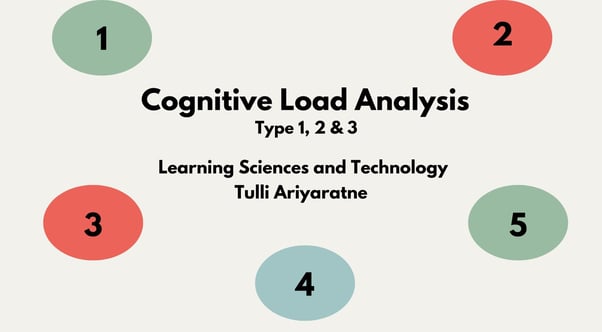Learning Design
Short Course Design
This short course was designed to explain sensory differences to the general public. This learning interaction was developed using Articulate 360 Storyline. The content was created following the Council for Exceptional Children (CEC) guidelines and Universal Design for Learning (UDL) principles.
Framework: ADDIE, Universal Design for Learning (UDL), Instructional Design, and eLearning.
Target Audience: Special education teachers, educators, and caregivers.
Tools: Articulate 360 Storyline, Canva Pro, and Google Cloud.
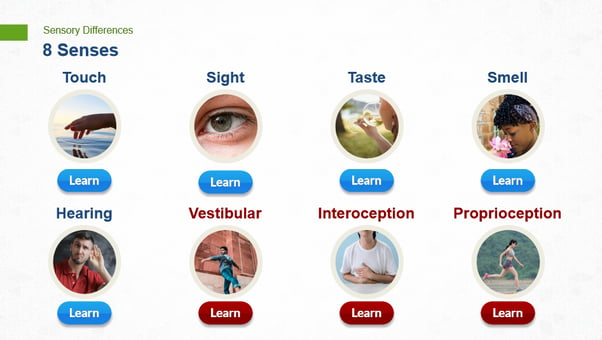

Interactive Learning Experience
Virtual science learning fosters curiosity, critical thinking, and a deeper understanding of scientific principles. Many learners in middle school science classes do not have the opportunity to dissect a real flower and observe its inside. This learning activity was designed to allow students to investigate the inside of a flower.
Framework: Cognitive load analysis, UDL, and instructional design.
Target Audience: Middle school students and teachers.
Tools: Canva Pro, and Genially.
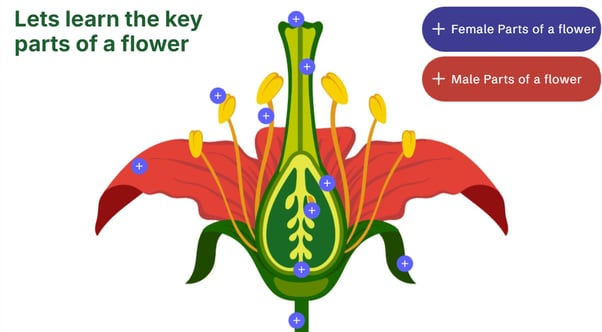

Game Design
Gamification in learning involves incorporating game elements into education. By making learning more interactive and goal-oriented, gamification encourages students to stay focused, participate actively, and develop problem-solving skills. When effectively designed, it transforms the learning experience, promoting deeper understanding and long-term retention of knowledge. This is a game design I developed to help learners understand keywords in biology.
Framework: Instructional Design, eLearning Development.
Target Audience: Middle school students and K-12 teachers.
Tools: Genially
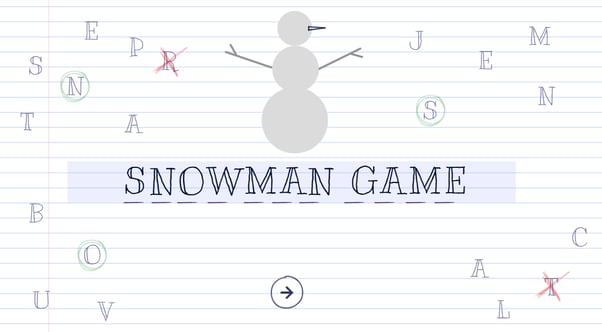

Interactive Learning Design
Proper illustrations are an important tool in STEM learning. Image designers should possess both STEM knowledge and illustration skills. These images were created by me to teach students about life science and asexual reproduction. It is important to provide learners with accurate information and allow them to learn while enjoying the subject. Learning is an emotional experience.
Framework: eLearning Development and UDL.
Target Audience: Middle school and high school students.
Tools: Canva Pro.


UX Design
Prototype Design
This prototype, developed using Figma, is an interactive digital tool designed to support educators and curriculum developers in navigating and understanding the Ohio Science Standards. The interface emphasizes user-friendly navigation, visual clarity, and pedagogical alignment, enabling users to explore standards with ease. This tool aims to bridge the gap between state standards and practical classroom implementation through thoughtful, accessible design.
Framework: Instructional Design, eLearning Development.
Target Audience: K-12 teachers and teacher trainers.
Tools: Figma
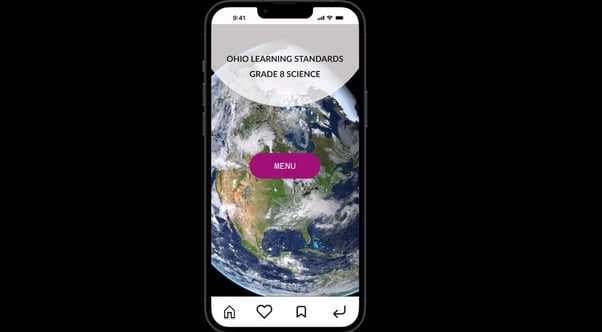

Curriculum Design
Professional Development Course
This course was designed to cover professional development in Earth and Space Science. Educators face challenges when they start teaching middle school science at the first time. This is a short course that was designed using Articulate 360 Rise to improve their content knowledge and pedagogy.
Framework: ADDIE, Ohio Science Standards and NGSS.
Target Audience: K-12 teachers and teacher trainers.
Tools: Articulate 360 Rise, Word, Canva Pro.


Teacher Training Course
This course was designed to cover one Grade 8 Ohio Science Standard strand. Many special education teachers and educators lack experience and pedagogical knowledge in teaching science to students with disabilities. This short course is designed to help them develop the skills needed to teach science effectively to middle school students with disabilities.
Framework: Ohio Science standards, NGSS, UDL and instructional design.
Target Audience: Ohio middle school intervention specialists.
Tools: Microsoft Word and Canvas LMS.


Universal Design for Learning
Many educators understand the importance of Universal Design for Learning (UDL), however, many are unsure how to incorporate UDL principles into their lessons. It is uncommon to see UDL principles integrated into the STEM curriculum. In this proposal, I explain how multiple means of engagement, representation, and action and expression can be implemented in a science classroom.
Framework: UDL, Ohio Science standards, NGSS
Target Audience: Teacher trainers and K-12 teachers.
Tools: Microsoft Word and Canva Pro.
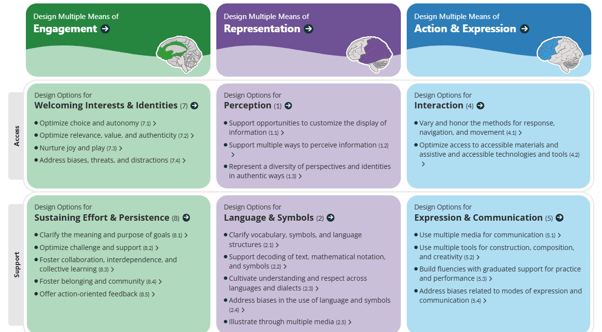

Canvas LMS Directions
This is a course I developed in Canvas LMS. It is a short, three-week course. Each week, learners complete assigned readings, lesson videos, and discussions. They also have one assignment and one quiz per week. The course is designed to be collaborative. This video is a course navigation guide that was posted on the course homepage.
Framework: Instructional Design, and Keller’s ARCS Model
Target Audience: Teacher trainers and K-12 teachers.
Tools: Canvas LMS, Microsoft Clipchamp, and Kaltura.

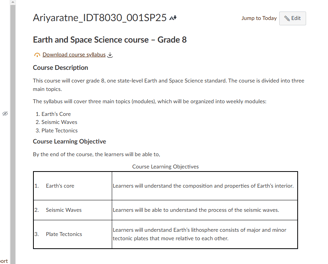
Video Design
YouTube Content Design
YouTube has become a valuable educational resource in higher education, providing free access to a vast global audience. There are plenty of useful videos on YouTube. As instructional designers, we should also have the ability to develop and edit videos that can be distributed on YouTube. This is a video I developed regarding my first book that I published, where I provide useful tips on understanding the grad school ranking system in the United States.
Framework: Instructional Design, eLearning Development
Target Audience: Undergraduate students and early career professionals.
Tools: Adobe Suite, Audacity, Canva, Audacity, Microsoft Clipchamp, and YouTube


Screencast Navigation
Screencasting is a valuable teaching tool that allows educators to record their computer screens while providing audio explanations. Graduate students are often required to read peer-reviewed articles, but many do not know how to find them using their university credentials. This is a screencast I developed for a university library system, demonstrating how to navigate through the system to find peer-reviewed journal articles.
Framework: Keller’s ARCS Model, Instructional Design, eLearning Development
Target Audience: Undergraduate and graduate students.
Tools: Adobe Suite, Audacity, Microsoft clipchamp, and Kaltura.


Video Design for Learning
Video education is an effective teaching method that enhances learning by combining visual and auditory elements. Some lessons are best taught with videos rather than any other method. Many courses are conducted on virtual platforms, from K -12 to higher education. This video was designed on global climate change, a topic that can be effectively taught using appropriate videos.
Framework: Keller’s ARCS Model and eLearning Development
Target Audience: Environmental advocates and K-12 students.
Tools: Adobe Suite, Audacity, Canva, Audacity, Microsoft Clipchamp, and Kaltura.


Interactive Presentations
Interactive Learning Experience
Presentations are a very useful and important tool in learning. Presentations can be designed on many different platforms, and Canva has become an excellent platform for developing learning materials, including presentations. Its interactivity, collaboration features, and incorporation of AI tools make it even more valuable for learning design. As someone who has been using Canva Pro for many years, I am confident in designing a variety of learning materials using Canva.
Framework: Instructional Design, eLearning Development
Target Audience: Educators and K-12 teachers.
Tools: Adobe Suite, and Canva Pro.


Interactive Learning Experience
Presentations often include good illustrations, allowing learners to better understand the slide by looking at it rather than just reading the text. In this presentation, you can see a few simple illustrations I created to give learners the maximum opportunity to grasp the learning objectives. As someone who has been using Canva Pro for many years, I am confident in designing various learning materials using Canva.
Framework: Instructional Design, eLearning Development
Target Audience: Instructional design learners and general audience.
Tools: Canva Pro.
